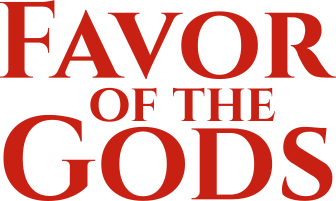Table of Contents
NPCs and Foes
When preparing an adventure, a GM needs to think about how detailed the included NPCs should be described and fleshed out. There are basically 4 different roles an NPC can fill: the extra, the minion, the harmless or unassailable and the big bad.
Extras
Simple peasants, workers, merchants and other ordinary folk usually do not need to have prepared game values since they are not actively involved in the story. It always pays off to have a list of names that you can assigned on demand though. If a PC does interact with an extra and rolls for an ability against them (for example to pick their pockets), make up a difficulty to beat on the spot according to the profession of the NPC. A merchant is probably more difficult to charm than a construction worker who in turn is more likely to be physically stronger.
Minions
Minions are extras that are meant as an obstacle that is easily overcome by the players. They may be the grunts of the big bad, simple guards or thugs. The GM should prepare some values for this kind of NPC such as the health, attack, defend and resilience difficulties. When choosing talents for them, the GM should only use simple enhancements of abilities or extra vigor or focus, i. e. talents that are easily trackable. Try to reduce the bookkeeping of these NPCs to an absolute minimum.
It should suffice to prepare one of these NPCs if they appear in groups. If such a group has different roles, preparing one of each role (for example melee and ranged weapons) is enough. During battle, use a table of the enemies divided by types to track their health.
To further simplify combat with such groups, the GM may also use the minion rule. This means that each minion is defeated as soon as they take damage or stress. Keep in mind that this makes them extremely easy to overcome.
The Harmless or Unassailable
An NPC that is actively involved in the story, but is unable to cause the group any harm or is so powerful that the group under no circumstances is able to do any damage to them (this is mostly the case for deities) does not need any combat values.
This kind of NPC should already have a name and all information they are likely to convey to the group before the game starts. They might also need additional background information and maybe connections to other NPCs.
Big Bad
If a group of foes has a more powerful leader with them, the NPC should be worked out almost as much as a PC. They should have some talents and/or favor and maybe divine aspects or chromatic slivers to make for an interesting challenge. The GM must make sure he understands how the mechanics of that NPC work as to not hold up the game by reading up on the rules during combat too much.
NPC Challenge Level
The challenge level of an NPC is determined by multiple factors: character level, wealth and favors.
The challenge of an encounter is determined by how much resources the PC party will have to spend to overcome it. Health and stress are the most precious resources since they take the longest to recover. Recovery times have to be taken into account when designing a challenge. In this regard, the challenge level of a PC is not the same as that of an NPC because the latter will only appear once during the adventure in most cases.
Another factor that needs to be considered is the amount of enemies in comparison to the size of the player party. Superior numbers have a huge influence in FoG.
There is no universal guideline when it comes to designing challenges. It differs from group to group and the GM has to experiment with different challenge levels working their way up from easy to difficult.
You can use the following table as a rough estimate of the values of differently powerful enemies.
| Difficulty | Health | Attack | Defense | Resilience |
|---|---|---|---|---|
| Weak | 20 | 10-15 | 10-15 | 8-12 |
| Medium | 30 | 15-20 | 15-20 | 12-16 |
| Strong | 40 | 20-25 | 20-25 | 16-20 |
| Very strong | 50 | 25-30 | 25-30 | 20-24 |
| Legendary | 60 | 30-35 | 30-35 | 24-28 |
| Mythical | 70 | 35-40 | 35-40 | 28-32 |
| Divine | 80+ | 40+ | 40+ | 32+ |
